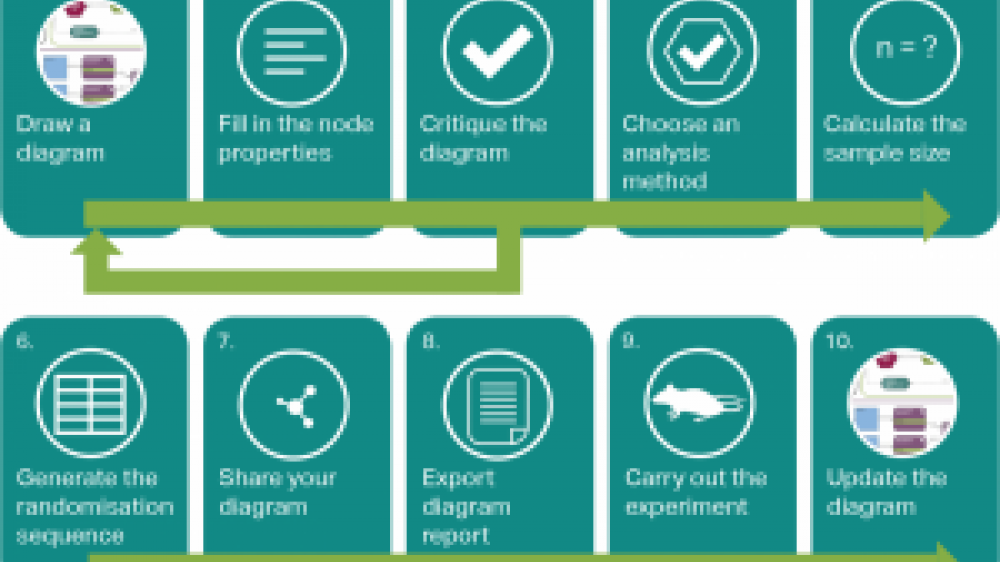Improving the quality of animal research with the EDA

Two new papers, published today and yesterday in Nature Methods and PLOS Biology describe the Experimental Design Assistant (EDA), a free-to-use, online resource developed by the NC3Rs in collaboration with a team of innovative software designers and in vivo experts and statisticians, to assist researchers in designing robust and reliable experiments, and improve the reproducibility of animal research.
In recent years, the quality and reproducibility of biomedical research has been highlighted as a concern by most scientific stakeholders. We have been developing a number of resources to support researchers and improve current practices in the design and reporting of animal research.
The EDA guides researchers through the design and analysis of an experiment and helps them generate a diagram that represents their experimental plans in detail. It then uses computer-based logical reasoning to provide critical feedback on the plans and help researchers identify the variables that might undermine the validity of the results, implement steps to reduce the risk of bias and define an appropriate analysis plan before the experiment is carried out.
The EDA was launched at the end of 2015 and is still evolving. Over the summer, we have developed a new functionality to facilitate the inclusion of experimental design information into grant applications: the EDA report. For any experiment designed in the EDA, this report can be generated at the click of a button and contains key information to help reviewers and grant panels assess how robust the planned experimental design is. It includes:
- The key information requested by the major funders – e.g. sample size justification, measures to reduce bias (randomisation, blinding)
- A summary of the EDA feedback that has not been addressed
- The recommended method of statistical analysis
- The EDA diagram
This report can be submitted as a part of a grant application, as part of the ethical review of the research, or, later on, with a journal manuscript.
References
-
Percie du Sert N, Bamsey I, Bate ST, Berdoy M, Clark RA, Cuthill IC, et al. (2017). The Experimental Design Assistant. Nature Methods. Epub Sept 28, 2017. doi: 10.1038/nmeth.4462.
-
Percie du Sert N, Bamsey I, Bate ST, Berdoy M, Clark RA, Cuthill IC, et al. (2017). The Experimental Design Assistant. PLOS Biology. 15(9):e2003779. doi: 10.1371/journal.pbio.2003779.
